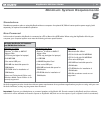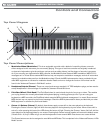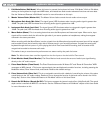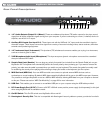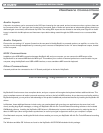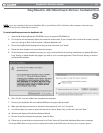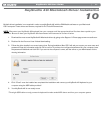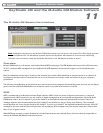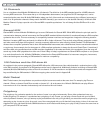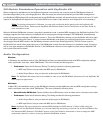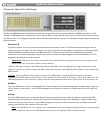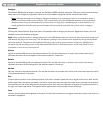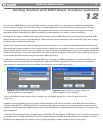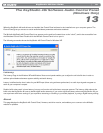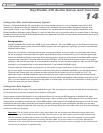
|
13
KeyStudio 49i User Guide
16 Channels
It is no coincidence that M-Audio GM Module has 16 channels. The definition of the MIDI standard specifies 16 MIDI channels
for every MIDI connection. This means that up to 16 independent data streams (carrying Note On/Off messages etc.) can be
transmitted at the same time. M-Audio GM Module makes use of all of them and can simultaneously play a different instrument on
each of its 16 synthesizer channels. Always match the MIDI channel(s) you transmit on to the desired channel(s) of M-Audio GM
Module. Channel 10 plays a special role in General MIDI compatible synthesizers. You will always find the GM Drum Kit on this
channel.
General MIDI
General MIDI is where M-Audio GM Module got its name. GM stands for General MIDI. While MIDI defines the principle used for
communication between musical instruments, the General MIDI standard defines what kind of sounds and features a GM-compliant
synthesizer has to offer. This was necessary for compatibility between musicians and songwriters. Imagine the following situation:
Musician A creates a MIDI song and sends it to Musician B for further refinement. They are both using different synthesizer models
and when musician B plays the song back, it sounds completely different from what musician A had intended. The GM standard
dictates that a compliant synthesizer has to have 128 standardized instruments (also called Patches) that are sorted and numbered
a certain way. As an example, the first instrument in a GM compliant synthesizer is always the Acoustic Grand Piano. If musicians A
and B are both using synthesizers that are GM compliant (regardless of the make and model of the synthesizer), then the song will
sound very similar when played back on either one of them. Many of today’s synthesizers are General MIDI compliant or can operate
in a mode that allows for this. M-Audio GM Module is based on the General MIDI standard. Its instrument categories, instruments,
effects and settings are according to GM standard for maximum compatibility.
128 Patches and the GM drum kit
As explained in the previous paragraph, General MIDI defines the 128 instruments (also called patches) a synthesizer has to offer
to be GM compliant. A complete list of GM patches can be found in Appendix A. Additionally, and also according to General MIDI
standard, M-Audio GM Module provides a Drum Kit on channel 10. All the used drum- and percussion sounds are mapped to the
keys as defined by the GM standard. A GM drum mapping chart can be found in Appendix B.
Multi-Timbral
Multi-Timbral means, that a synthesizer can produce multiple instrument sounds at the same time. For example, play Piano on
channel 1, Bass on channel 2 and Drum sounds on channel 10 – all at the same time. M-Audio GM Module can play different
instruments on all of its channels simultaneously and is therefore 16x multi-timbral.
Polyphony
The polyphony of a synthesizer stands for the number of notes it can play simultaneously. Some older synthesizers have very
limited polyphony. For example, if a synthesizer has a polyphony of only 3 notes, you can play a 3-note chord with your left hand
without problems. However, once you attempt to play an additional note with your right hand, you exceed the maxium polyphony by
attempting to play 4 notes at a time. As a result, one of the notes played with your left hand will stop playing in favor of the new note
triggered with your right hand. M-Audio GM Module has no such limitation and allows you to play as many notes at the same time as
your computer’s CPU can handle.



